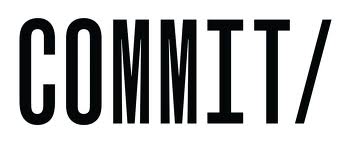Nodes is a general purpose graph library. It focuses on simple creation and traversal of graphs with general objects on their nodes and links. Nodes is a work in progress, it should not be considered production-ready in general, though certain aspects may be well-tested.
The simplest way to use nodes is to reference its maven package. We do not build releases for nodes (yet), but the latest snapshot can be included using jitpack. Simply inclide the following repository:
<repositories>
<repository>
<id>jitpack.io</id>
<url>https://jitpack.io</url>
</repository>
</repositories>And the following dependency:
<dependency>
<groupId>com.github.data2semantics</groupId>
<artifactId>nodes</artifactId>
<version>-SNAPSHOT</version>
</dependency>In order to keep object names and variable descriptors short, Nodes uses some non-standard terminology:
- node
- A node is an element in a graph, also known as a vertex.
- link
- A link is what connects nodes, also known as an edge.
- label
- Labels are the objects that annotate nodes.
- tag
- Tags are the objects that annotate links.
- U
- Undirected, a graph for which the links do not have a specific direction.
- D
- Directed, a graph for which the links have a specific direction.
- T
- Tagged, a graph for which the links are annotated with objects
These combinations make for four basic interfaces, which form the backbone of Nodes:
| untagged | tagged | |
|---|---|---|
| undirected | UGraph | UTGraph |
| directed | DGraph | DTGraph |
These are all subinterfaces of the basic interface org.nodes.Graph.
There are currently three main implementations available:
- org.nodes.MapDTGraph
- Memory-hungry but fast for lookup and traversal.
- org.nodes.MapUTGraph
- Undirected version.
- org.nodes.LightDGraph
- More conservative memory use, but slower for some operations, and no tags.
Some final things to note:
- Every graph object has an implicit sorting over its nodes. Since this is true for any graph representation in the memory of a computer, we've decided to make this sorting explicit by giving nodes a fixed index in the list of nodes.
- Labels and Tags should be immutable objects with solid equals() and hashcode() implementations (treat a graph like a HashSet). Modifying label or tag object so that its hashcode is changed may mess things up (depending on which graph implementation is chosen).
- Labels and tags do not have to be unique, but if a graph has unique labels, there are some methods to make life easier.
Creating a graph:
// We're using a DTGraph, but we don't care about the specifics
Graph<String> graph = new MapDTGraph<String, String>();
Node<String> a = graph.add("a"),
b = graph.add("b"),
c = graph.add("c");
a.connect(c);
graph.node("a").connect(graph.node("b"));
System.out.println(graph);
// result (toString prints DOT format): digraph {a -> c; a -> b}For feedback please use the issues on github, or if that's not an option, send an email to nodes * peterbloem * nl, replacing the asterisks with an at symbol and a period respectively.
- Relabeling nodes and links is currently not possible and would be an expensive operation in the implementations available. We're working on a solution. As a workaround, the best option is to copy the graph over to a new graph. A wrapper object around the original object is a solution, but should be used with care, since these will be stored in hashtables.
API documentation can be found here. Note that this may be out-of-date. For the most recent version, the code should be checked out.
Nodes is produced with funding from the Dutch national research program COMMIT.
